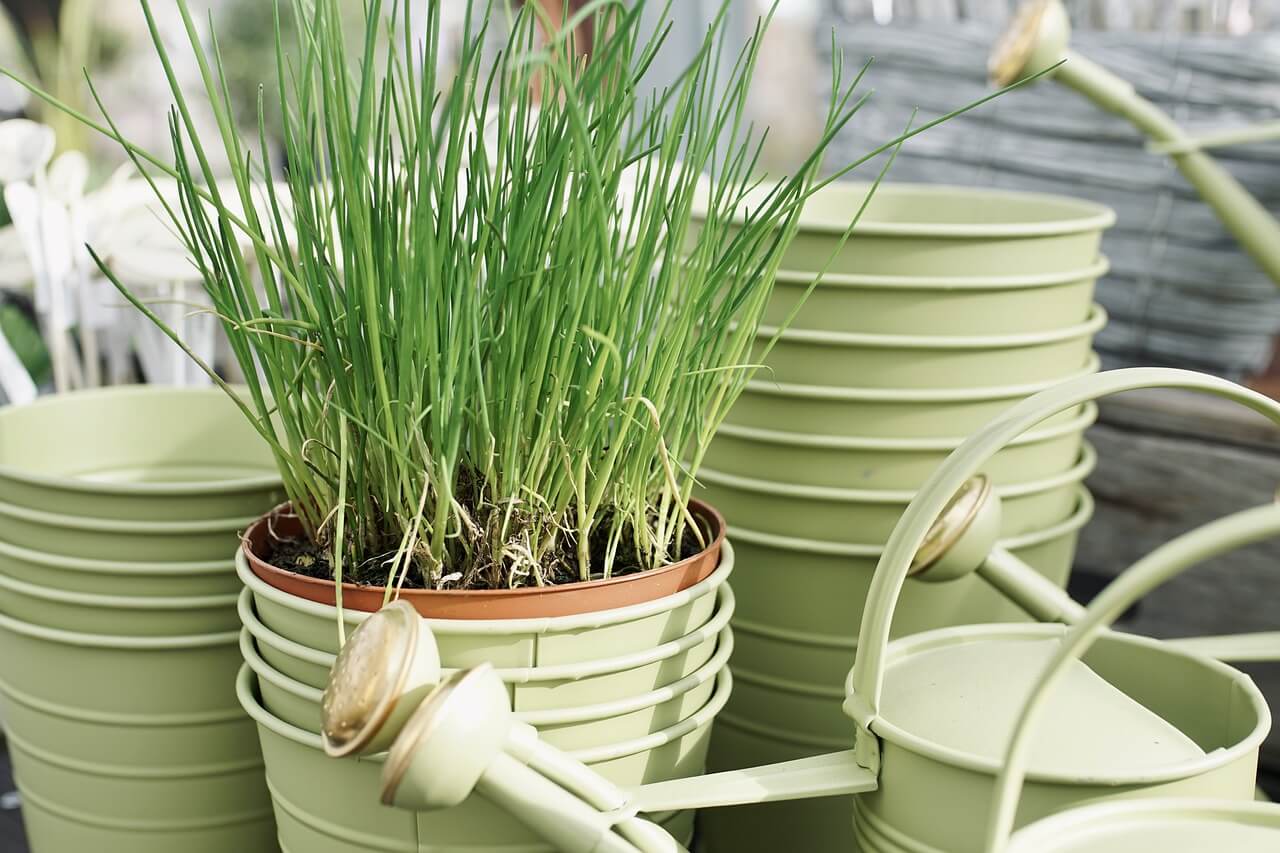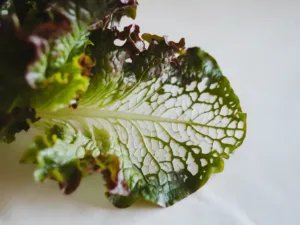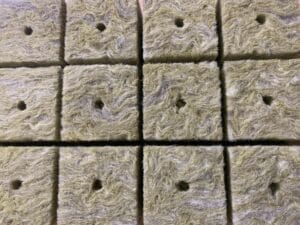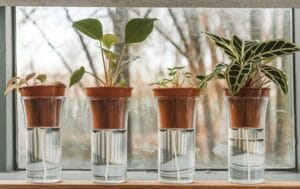Chives are a classic in the kitchen—their mild, spicy flavor pairs perfectly with salads, soups, potato dishes, and much more. But why grow chives hydroponically? It’s simple: with a hydroponic system, you can harvest fresh chives all year round, regardless of weather and season. You need less space and can grow chives right in your kitchen or on your balcony. No more dealing with waterlogged garden beds or drought stress in the height of summer!
Hydroponics also offers precise control over nutrients and water supply, leading to faster growth and higher yields. Under optimal conditions, chives grow almost effortlessly and reward you with aromatic, fresh stalks in just a few weeks. For anyone looking for a sustainable and efficient growing method, hydroponic chive cultivation is an excellent solution.
The Best Chive Varieties for Hydroponics
Not all chive varieties are the same. There are different types of chives that vary in size, flavor, and growth form. For hydroponic cultivation, you should choose varieties that thrive well in a controlled environment and have a fast growth rate. Here are some of the best chive varieties for hydroponics:
- Thick-Stemmed Chives: This variety is particularly robust with thicker stalks. It is less susceptible to diseases and grows especially vigorously. Thick-stemmed chives have a more intense flavor and are perfect for soups or as a topping for baked potatoes.
- Thin-Stemmed Chives: This variety has finer, more delicate stalks and a mild flavor. It grows quickly and is excellent for fresh consumption in salads or as a garnish. Thin-stemmed chives thrive particularly well in hydroponic systems with sufficient light.
- Garlic Chives (Allium tuberosum): An interesting alternative to classic chives is garlic chives. Its stalks are somewhat flatter, and its flavor is reminiscent of a blend of chives and garlic. This variety is excellent for hydroponics and offers a unique flavor component for many dishes.
No matter which variety you choose, make sure to provide the right care and environment for optimal growth success.
The Ideal Hydroponic System for Chives
Chives are an easy-going herb and can thrive in various hydroponic systems. However, the choice of the right system depends on your space availability and budget. Here are some of the most suitable hydroponic systems for growing chives:
- Nutrient Film Technique (NFT): This system is ideal for growing chives as it provides a constant supply of nutrients and oxygen to the roots. A thin layer of nutrient-rich solution flows through a shallow channel where the plant roots hang. This system requires little space and is particularly efficient.
- Deep Water Culture (DWC): In this system, the plant roots float directly in an oxygen-rich nutrient solution. It is well-suited for chives as it ensures a consistent supply of nutrients and water. DWC systems are easy to set up and maintain, making them perfect for beginners.
- Ebb and Flow System: Here, the plants are periodically flooded with nutrient solution and then drained. This system offers high flexibility and is ideal if you want to grow different plants in one system. For chives, it works particularly well when well-ventilated and the nutrient solution circulates regularly.
By choosing the right system, you can maximize the yield and health of your plants.
Growing Chives: How to Succeed!
Growing chives in a hydroponic environment can be a simple and rewarding experience if you follow a few basic steps. The process begins with selecting high-quality seeds. Ensure you use fresh seeds, as chive seeds have limited viability and older seeds may not germinate as well.
Start by placing the seeds in a moist but well-ventilated growing cube, such as rock wool or coconut fiber. Keep the cubes moist but not waterlogged, and place them in a warm location with temperatures between 18-22 °C. Within 7 to 14 days, you should see the first tender seedlings. To increase the germination rate, you can use a germination box that maintains stable humidity and temperature.
Once the seedlings reach a height of about 5-7 cm and have developed some true leaves, you can transfer them to your hydroponic system. Handle the young plants carefully to avoid damaging the delicate roots. From this point on, it is important to provide the right nutrient solution and sufficient lighting to ensure the chives grow vigorously.
The Right Substrate for Chives in Hydroponics
A crucial factor for the success of your hydroponic chive cultivation is the choice of the right substrate. Since chives have relatively fine roots that need good aeration, the substrate should offer a good balance between water retention and air permeability. Here are some substrate options that are particularly suitable:
- Rock Wool: A popular substrate in hydroponics, offering excellent water and air retention. It is easy to handle and provides a stable base for the plants. Rock wool is ideal for NFT and DWC systems.
- Coconut Fiber: This organic substrate is environmentally friendly and has excellent water retention properties. It is well-suited for ebb and flow systems and provides good aeration for the roots.
- Perlite: Lightweight and very porous, perlite improves drainage and aeration in the root zone. It can be combined well with other substrates to enhance aeration.
Each of these substrates has its pros and cons, but all can be effectively used in combination with the hydroponic systems mentioned above. The right choice depends on your specific requirements and the selected system.
Optimal Temperature Conditions for Chives
Chives are relatively hardy plants that can thrive in a variety of environments, but to achieve the best growth, you should ensure that temperature conditions are optimal. Chives prefer moderate temperatures and can grow in both cooler and warmer conditions.
The ideal temperature range for hydroponic chive cultivation is between 18-24 °C during the day and 10-15 °C at night. Temperatures above 27 °C can slow growth and stress the plant, while temperatures below 10 °C can significantly reduce growth.
To maintain consistent temperatures, you can take simple measures such as using fans for better air circulation, installing heating mats, or placing your hydroponic system in a climate-controlled room. This ensures that your chives remain healthy and continue to grow.
Light Requirements for Healthy Chives
Light is an essential factor for the growth of chives, especially in a hydroponic environment. Like many herbs, chives require sufficient light to grow strong and healthy. Ideally, chives should receive about 12 to 16 hours of light per day to ensure optimal photosynthesis. In most cases, natural daylight is not enough, especially during the winter months. This is where artificial lighting systems come into play.
LED lights are an excellent choice for hydroponic chive cultivation. They are energy-efficient, have a long lifespan, and produce less heat than other lighting types, reducing the risk of burning the plants. Be sure to choose LED lights with a full spectrum, as they best mimic the light spectrum of the sun. Another option is fluorescent tubes, which also work well but are less efficient than LEDs.
It is important to place the lights at a distance of about 15 to 30 cm from the plants to ensure even light distribution without overheating the plants. By following these lighting tips, you can ensure that your chives grow vigorously and maintain a healthy green color.
pH and EC Levels: The Perfect Values for Chives in Hydroponics
Monitoring the pH and EC (electrical conductivity) levels is crucial for the healthy growth of chives in hydroponics. These two factors affect how well the plants can absorb nutrients. For chives, the ideal pH level is between 6.0 and 7.0. Within this range, most nutrients are available to the plant. If the pH level is too high or too low, nutrient blockages can occur, impairing growth.
The EC level, which measures the concentration of nutrients in the nutrient solution, should be between 1.4 and 2.0 mS/cm for chives. A too-low EC level indicates a lack of nutrients, while a too-high level can indicate over-fertilization, which can lead to root damage.
It is important to monitor the pH and EC levels regularly, ideally once a week. Use suitable measuring devices to accurately determine the values. If the pH level is not within the optimal range, you can use special pH-up or pH-down solutions to correct it. This ensures that your chive plants always find the ideal conditions.
The Right Nutrient Mix for Chives
Chives, like all plants, need the right balance of nutrients to grow strong and healthy. The key nutrients for chives are nitrogen (N), phosphorus (P), and potassium (K), often abbreviated as N-P-K. Nitrogen promotes leaf growth, phosphorus is important for root development, and potassium strengthens cell structure and promotes disease resistance.
A balanced ratio for the nutrient solution might be about 15-5-20 (N-P-K), well-suited to the needs of herbs and leafy plants like chives. You can use special hydroponic herb fertilizers that already contain the right mix and all necessary micronutrients like calcium, magnesium, and iron.
Ensure you renew the nutrient solution every two weeks and regularly check the concentration to avoid over-fertilizing the plants. The roots should be free of deposits, indicating that the nutrients are being well absorbed. With the right nutrient mix, your hydroponic chives will grow vigorously and develop an intense, aromatic flavor that you’ll love.
When and How to Harvest Chives in Hydroponics
Harvesting chives in a hydroponic setup is simple and requires just a bit of patience and attention. The optimal time for harvesting is when the stalks have reached a height of about 15 to 20 cm. At this point, the stalks are sturdy enough to offer good flavor but still young enough to be tender and aromatic.
To harvest the chives, cut the stalks about 2-3 cm above the base. This encourages regrowth, allowing you to harvest fresh chives repeatedly. Avoid cutting the entire plant at once; instead, harvest only about a third to half of the stalks so the plant has enough energy to regenerate.
Another tip: Harvest preferably in the morning when the plant’s essential oils are most concentrated. This ensures a particularly intense aroma and better flavor. With proper care and regular harvesting, you can enjoy fresh chives continuously for many months.
Diseases and Pests: Prevention and Treatment
Even in a hydroponic environment, chives can be affected by diseases and pests. The most common problems are root rot, powdery mildew, and aphids. Fortunately, there are various strategies to prevent and treat these issues.
- Root Rot often occurs due to insufficient oxygen supply to the roots or excessive moisture. Ensure your hydroponic system is well-ventilated and the roots receive enough oxygen. Regularly checking the roots and the system helps detect this problem early.
- Powdery Mildew can be caused by high humidity and poor air circulation. Make sure your growing area is well-ventilated and avoid overwatering. If powdery mildew develops, a mixture of water and baking soda can help contain its spread.
- Aphids and other sucking insects can occasionally spread in a hydroponic environment. A simple solution is using neem oil, which repels pests while being safe for the plants. Alternatively, ladybugs can be used as natural predators.
By regularly inspecting your plants and creating a healthy environment, you can prevent many of these issues and ensure your chives are always in top shape.
Special Tips for Growing Chives
When growing chives in hydroponics, there are a few additional tips and tricks that can help you get the most out of your plants:
- Companion Planting: Chives pair well with other herbs like parsley, basil, or dill. These herbs have similar needs in terms of light, temperature, and nutrients, making it easier to grow them together in one system. Additionally, chives help repel pests with their essential oils, benefiting neighboring plants.
- Regular Pruning: Light pruning promotes growth and branching of the stalks. Regularly trim old and yellow leaves to make room for new, fresh growth. This keeps the plant healthy and ensures a continuous harvest.
- Water Management: Chives like it moist but not wet. Ensure the roots do not remain in water permanently to avoid root rot. A well-ventilated system and regular root checks are key to successful cultivation.
With these tips, you’ll be well-equipped to cultivate chives in your hydroponic setup and consistently achieve a bountiful harvest.







